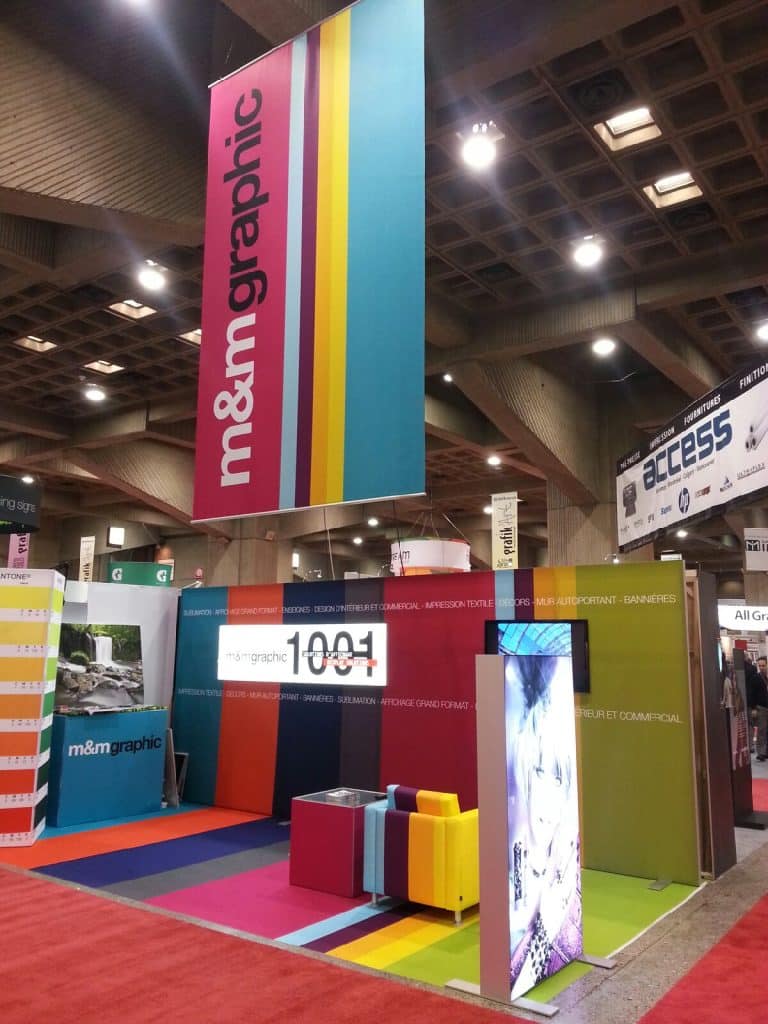
On the premises of an event, apart from the large sponsor banners, there are directional banners. These are the ones that display the location of places to direct people to the right places. You will see for example: Map of the site (with the mention “You are here”), Lounge, Podium (for prize giving), Welcome (for welcoming visitors at the entrance to the site), Cloakroom and Toilets (arrow at top meaning “straight on”), Parking, VIP Zone, First Aid and Information, to name the most common.
Banners are usually positioned on fences or stretched between two trees or poles at outdoor events. They are also sometimes attached to buildings. Often, it is in the form of flags or tents that the display is presented on a site. Practical and serving as shelter, tents often have a dual function. Flags, on the other hand, are more eye-catching than static banners because they constantly move in the wind.
This form of visual communication is essential to the smooth running of any event, allowing people to find their way around, know where to go and how to get there.
Some people in event management are course-setting specialists. When an event attracts thousands of visitors, it is essential to know how to direct crowd movements intelligently, plan security corridors and places reserved for first aiders (emergency evacuations, first line care, cardiac resuscitation, etc.).
After the security zones come the VIP zones. This is where we find important visitors such as representatives of sponsors, families of athletes or artists, people who paid more for their ticket to enjoy privileges, etc.
Finally, the other banners delimit the areas of the route, the strategic places (toilets, restaurant area, entrance and exit, etc.).
To this end, by way of example, to fully understand the challenges of such a production, we will notice above a visual of one of the batches of files provided by Gestev for the production of banners for the Marathon de Québec (Je cours Québec 2019). The files intended for the production of the directional banners are generally of Illustrator type (.ai) converted into PDF (vectorial), generally containing only text and logos. This type of file is recommended for large format printing because it allows very high definition despite the gigantic formats and more “punchy” color solids due to the interpretation of the RIP (Raster Image Processor: press processor). In addition, the understanding and processing of the file by the processors is about a hundred times faster than in raster image code. There are therefore only advantages to working in vector for large format display.